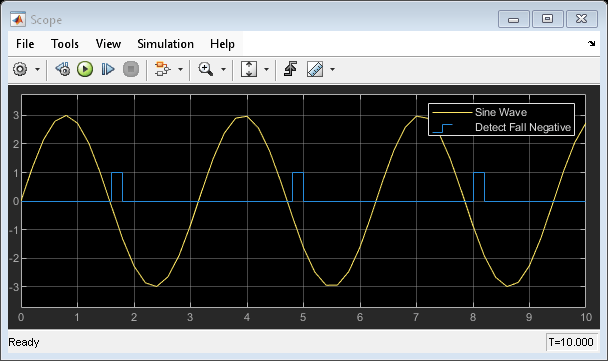Detect Fall Negative
Detect falling edge when signal value decreases to strictly negative value, and its previous value was nonnegative
Libraries:
Simulink /
Logic and Bit Operations
Description
The Detect Fall Negative block determines if the input is less than zero, and its previous value is greater than or equal to zero.
This block supports only discrete sample times.
Examples
Ports
For more information, see Data Types Supported by Simulink.
Input
Output
Parameters
Block Characteristics
Data Types |
|
Direct Feedthrough |
|
Multidimensional Signals |
|
Variable-Size Signals |
|
Zero-Crossing Detection |
|
Extended Capabilities
Version History
Introduced before R2006a

